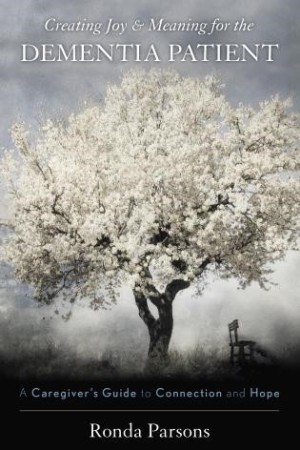 Author Ronda Parsons serves as her mother-in-law’s devoted caregiver in Creating Joy & Meaning for the Dementia Patient. Nan’s mind is slowly slipping away due to dementia and Ronda discovers ways to bring purpose and joy to her life.
Author Ronda Parsons serves as her mother-in-law’s devoted caregiver in Creating Joy & Meaning for the Dementia Patient. Nan’s mind is slowly slipping away due to dementia and Ronda discovers ways to bring purpose and joy to her life.
The Parsons family moves Nan into a nearby assisted living community and later into memory care. Meanwhile, Ronda visits almost daily in an act of grace and to help Nan preserve her dignity as the disease takes its toll.
In the chapter toward the end of the book on Going Home, Ronda writes, “Nan and I have entered into that odd time of preparing, she for a journey and me bracing myself for the time when all the pieces of her will have blown away like scattered seeds from a later summer milkweed.”
As the seeds scatter, Ronda becomes “the CEO of Nan” and ensures her mother-in-law’s medical and care teams know about Nan before dementia to help them provide better care.
Within the first 21 pages, I kept saying to myself, “Yes, YES, she’s right on target!” Ronda’s story is our story or the story new caregivers aspire to share.
Ronda discovers ways to positively approach caregiving, by drawing on emotional memories and the five senses, creating beauty and bringing nature to her Nan. Yet, what motivated Ronda to care so deeply, while trying to make her mother-in-law’s life purposeful and joyful? Was it because she lost her parents too early in her life? Was it because Nan treated her as her daughter? She could have emphasized her motivation, more. Toward the end of the 200-plus page book, Ronda writes with passion about our human need, regardless of circumstances, to feel dignity. She also inspires the reader with examples of God’s grace. Sometimes the smallest gestures are the most meaningful like when an elderly stranger presented her and Nan with a gift of a doll, while Ronda struggled to help her mother-in-law get in the car. It worked.
Although, she was not the typical family caregiver charged with 24-hours-a-day 7-days-a-week care (this makes a big difference in managing energy and outlook as a caregiver), I was impressed by her loving and unconditional care for Nan. At times I wondered, would her words inspire or intimidate? She rarely touched on her frustrations—those moments we caregivers want to scream. In one of the last chapters on caregiver self-care, she mentions the hardships. Perhaps, she relegated these struggles the same way she described how Nan handled her life’s struggles—as mere footnotes.
Despite her loving regard for her mother-in-law, I was distracted by Ronda’s repeated use of two labels—”dementia sufferer” and “dementia patient.” We’ve made great strides in reducing the stigma of dementia over the 20 years I’ve been in this field and most of it is due to the language we use. I would have preferred to read, “person with dementia,” “patient with dementia,” and “person suffering from [condition] due to dementia.” This focuses on the person while relegating the disease to where it belongs—in second place.
Ronda’s observation of the nature of dementia is compelling, particularly when she describes it as a tug-of-war between short-term and long-term memories. She created the Moment by Moment technique, which keeps her focused on bringing joy and purpose to Nan during the moments they’re together. Even while Nan screams during the entire time it takes Ronda to wheel her from the doctor’s office across the street, through the parking lot, and into the memory care center, Ronda opts to find the humor in this inexplicable situation.
This daughter’s story of devotion to her mother-in-law and use of diverse metaphors, make her points more vivid and memorable such as in the chapter, “A Positive Approach,” where she writes, “Together in our tiny boat called Hope we have navigated the great rushing river of dementia.” Her focus is clear in each of the chapters—to make sure Nan finds joy and meaning despite what is lost to dementia.
She tells moving stories (beyond her and Nan) that set meaningful context for the reader and summarizes each chapter with a list of insights.
Creating Joy & Meaning for the Dementia Patient is filled with ideas and tips that can be put into practice immediately.














